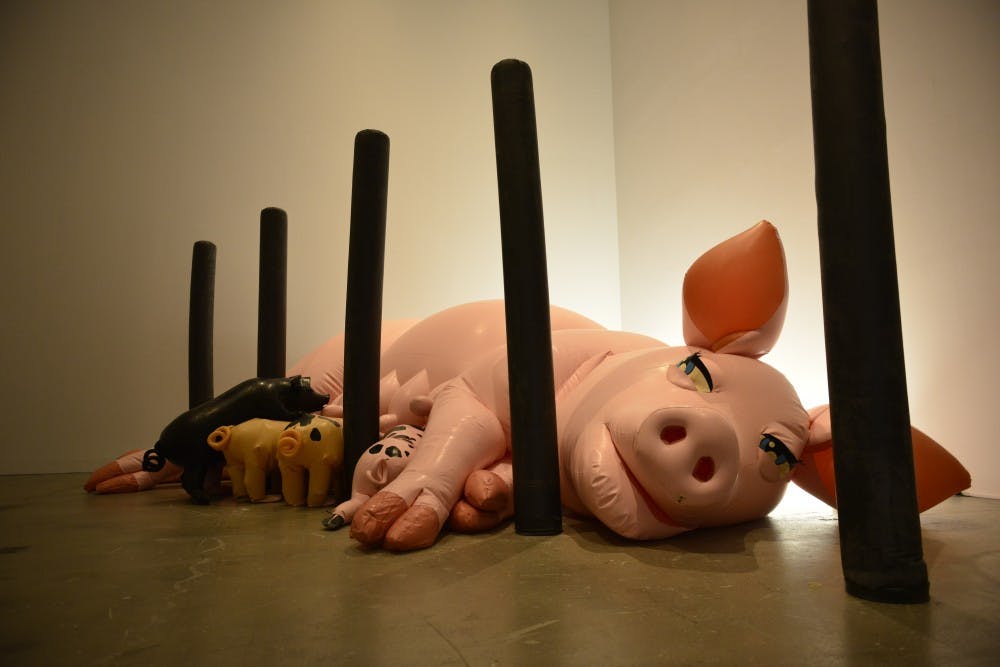It was dim and cool in the Philadelphia Museum of Art, but I felt giddy. It took me awhile to believe that John Singer Sargent’s original In the Luxembourg Gardens was indeed inches before me. Eyes wide, mouth wider, I was filled with a sentimental attachment: this was more than a painting. Gazing at the painting, the loose, dashing brushstrokes that so elegantly depicted the garden scene, I sensed spontaneity and closeness. In his casual positioning of the figures and seemingly random choice of setting, I saw a friend in the painting. Artworks like this expand my transient existence by allowing me to live, for a brief moment, in the grandmasters’ worlds across space and time.
If an artwork is a time capsule of another world or an artist’s mental world, a good exhibition is a portal through which I travel into those secret domains. This makes art museums my pilgrimage sites in every city. The “Van Gogh’s Bedrooms” exhibition at the Art Institute of Chicago pulled me into the intimate world of this volatile, neurotic artist. In the two chair paintings, I saw Van Gogh’s understanding of different personalities and interests between Gauguin and himself: on Gauguin’s elegant walnut armchair he placed a candle and books, while his rustic wooden chair held a humble pipe and tobacco with a box of onions in the background. The curatorial decision of orienting two chairs facing against each other further emphasized their conflicts and contrasting temperaments. The exhibition presented a life–sized model of his bedroom, in which I felt Van Gogh’s presence—his excitement waiting for Gauguin in this room, and his despair realizing that they could not work together peacefully.
It dawned on me that my previous notion of a museum was inadequate: a museum is never secondary to the history it records, nor is it just a keeper of the past. The curators actually set our perspectives and perceptions when they recreate their judgment of “reality” through the display planning for each object and the space allocation around it. Design decisions are guided by what to display and why as well as the focus of an exhibition. The storyline informs the amount of space required, the placement of objects, and the sequence in which visitors will move around the exhibition. These all affect visitors’ understanding. Not only interactive installations but also small details like lighting dictate viewers’ engagement and immersion. But at the end of the day, the recreation of what is reality is ultimately inexpressible. It’s an experience that can only be felt first–hand.
This is why museums constantly work to rouse visitors’ admiration. On a large wall of the Special Exhibitions section at the PMA, for example, hung eight “works of Hieronymus Bosch” from the John G. Johnson collection. Johnson thought these pieces were all original works by the artist, but curators and conservators have found over time that only one piece is a true Bosch. Instead of directly telling viewers which one it is, they invited them to take a guess and then use a fan deck to learn what scholarly and technical research indicates. This instantly engages the audience, whose curiosity can’t fail to be stimulated. Bosch’s popularity also gets conveyed—those copies of his fantastical imagery showed how large a brand name he was.
Viewing isolated pictures had become such a modern convention that collectors did not always mind this, but museum staff have worked to reconstruct the setting that gave rise to a group of related paintings. As the John G. Johnson collection says in the preface to the work, “over time their efforts have led to [our] greater understanding of what these various pieces are, where they came from, and how they were made and used.”
It requires much effort today to present artworks that are removed from their original context and setting. A good exhibition not only shares artworks’ aesthetic and historical values with the visitors, but also conveys unique insights into artists, their processes, and their challenges. It is like a portal that takes viewers into a everlasting, hidden world. While each object preserves a specific moment in history, museums are the keeper of our collective memory as a civilization; they enable us to expand our limited lifetime as individuals.

